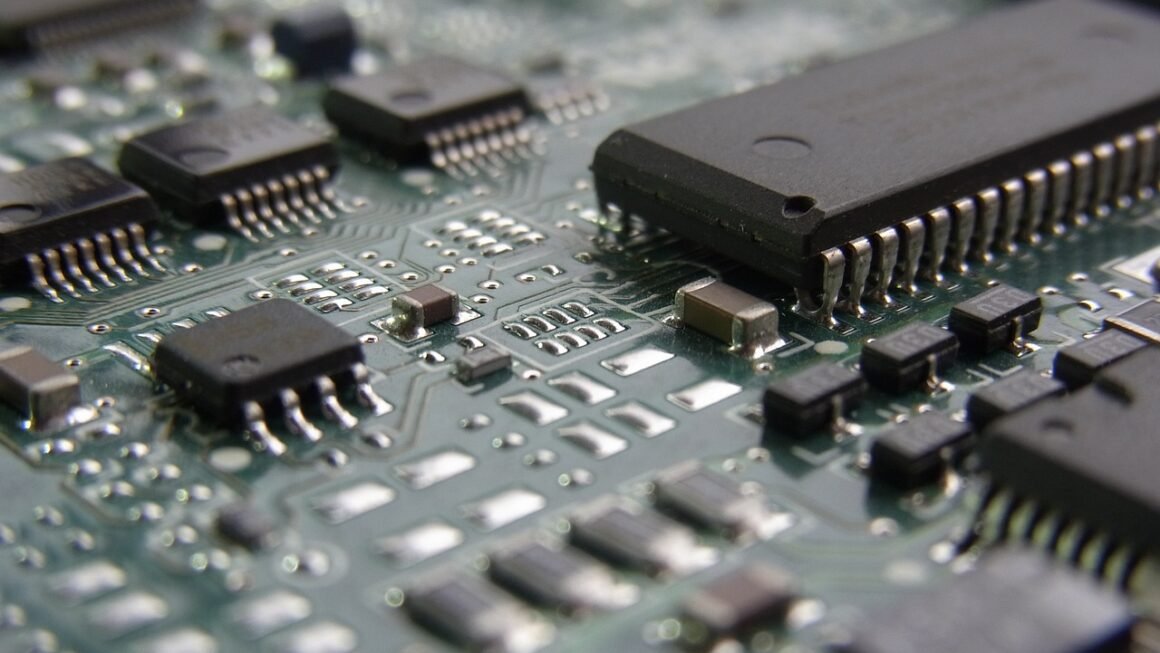Drones, once the stuff of science fiction and military operations, have soared into the mainstream. From hobbyists capturing breathtaking aerial footage to businesses revolutionizing operations in industries like agriculture, construction, and real estate, unmanned aerial vehicles (UAVs) are reshaping our world. This comprehensive guide explores the diverse world of drones, covering their applications, regulations, technology, and what to consider before taking flight.
Understanding Drones: A Comprehensive Overview
Drones, technically referred to as Unmanned Aerial Vehicles (UAVs), are aircraft without a human pilot on board. They are remotely controlled by a pilot on the ground or operate autonomously through pre-programmed flight plans. The technology behind drones has advanced rapidly, making them increasingly accessible, capable, and affordable.
What Defines a Drone?
- Unmanned: Operates without a pilot on board.
- Remote Control or Autonomous Flight: Can be controlled remotely or fly autonomously using GPS and pre-programmed routes.
- Variety of Sizes and Capabilities: Ranging from small, toy-sized drones to large, sophisticated UAVs used for industrial applications.
- Powered by Batteries or Fuel: Most consumer drones are battery-powered, while larger, industrial drones may use fuel for longer flight times.
Key Components of a Drone
- Airframe: The structural body of the drone, typically made of lightweight materials like carbon fiber or plastic.
- Motors and Propellers: Provide lift and propulsion, allowing the drone to take off, hover, and move through the air.
- Flight Controller: The “brain” of the drone, responsible for stabilizing the aircraft, processing sensor data, and executing pilot commands or pre-programmed flight plans.
- Sensors: Including GPS, accelerometers, gyroscopes, and barometers, which provide data to the flight controller for stable flight and navigation.
- Camera and Gimbal: Many drones are equipped with cameras for capturing photos and videos. A gimbal stabilizes the camera, reducing vibrations and ensuring smooth footage.
- Battery: Powers the drone’s motors and electronics. Battery life is a crucial factor in drone performance.
- Communication System: Allows the pilot to control the drone and receive telemetry data, such as battery level, altitude, and GPS coordinates.
- Example: DJI, a leading drone manufacturer, offers a wide range of drones from the beginner-friendly Mini series to the professional-grade Mavic and Inspire series. Each series offers different features, capabilities, and price points, catering to various user needs.
Drone Applications: Transforming Industries
Drones are no longer just toys; they’re powerful tools transforming various industries with their unique capabilities.
Photography and Videography
- Aerial Photography: Capturing stunning landscape photos, real estate photography, and event coverage.
- Cinematography: Used in film and television production for capturing dynamic aerial shots and perspectives.
- Example: Real estate agents use drone photography to showcase properties from unique angles, providing potential buyers with a comprehensive view of the property and its surroundings.
Agriculture
- Crop Monitoring: Assessing crop health, identifying areas of stress or disease, and optimizing irrigation and fertilization.
- Precision Agriculture: Applying pesticides and fertilizers with pinpoint accuracy, reducing waste and environmental impact.
- Example: Farmers use drones equipped with multispectral cameras to analyze crop health and identify areas that need attention, leading to improved yields and reduced costs.
Construction and Infrastructure Inspection
- Site Surveying: Creating accurate 3D models of construction sites for planning and monitoring progress.
- Infrastructure Inspection: Inspecting bridges, power lines, and pipelines for damage or defects, reducing the need for dangerous manual inspections.
- Example: Construction companies use drones to monitor progress on large-scale projects, providing real-time data and aerial imagery that helps them track milestones and identify potential delays.
Public Safety and Security
- Search and Rescue: Locating missing persons in remote or difficult-to-reach areas.
- Law Enforcement: Providing aerial surveillance for crime scenes and crowd control.
- Disaster Relief: Assessing damage after natural disasters and delivering supplies to affected areas.
- Example: Fire departments use drones equipped with thermal cameras to identify hotspots and assess the extent of fires, helping firefighters make informed decisions and improve safety.
Delivery and Logistics
- Package Delivery: Delivering small packages quickly and efficiently, especially in urban areas.
- Medical Supply Delivery: Transporting life-saving medications and medical supplies to remote areas or disaster zones.
- Example: Companies like Amazon and UPS are actively developing drone delivery systems to streamline package delivery and reduce delivery times.
Drone Regulations and Safety
Operating a drone safely and legally is paramount. Regulations vary depending on your location, so it’s crucial to understand and comply with the rules set by your local aviation authority.
Regulatory Bodies
- Federal Aviation Administration (FAA) in the US: The FAA regulates drone operations in the United States, requiring registration for most drones and specific certification for commercial operations.
- Civil Aviation Authority (CAA) in the UK: The CAA regulates drone operations in the United Kingdom, with similar requirements for registration and certification.
- EASA (European Union Aviation Safety Agency) in Europe: EASA sets the regulations for drone operations within the European Union, aiming for a harmonized approach across member states.
Key Regulations
- Registration: Registering your drone with the relevant aviation authority is often required.
- Altitude Limits: Maximum flight altitude limits are in place to avoid interfering with manned aircraft. Typically, this limit is 400 feet (120 meters) above ground level.
- Visual Line of Sight (VLOS): Generally, drones must be flown within the visual line of sight of the operator. Some operations allow for Beyond Visual Line of Sight (BVLOS) with specific waivers and approvals.
- Restricted Airspace: Flying near airports, military bases, and other restricted areas is prohibited or requires special authorization.
- Night Flying: Night flying may require specific equipment, training, and authorization.
- Privacy: Respecting the privacy of individuals and avoiding intrusive surveillance is essential.
Safety Tips
- Pre-Flight Check: Always perform a thorough pre-flight check to ensure the drone is in good working condition.
- Weather Conditions: Avoid flying in adverse weather conditions, such as strong winds, rain, or fog.
- Obstacle Avoidance: Be aware of your surroundings and avoid flying near obstacles, such as trees, power lines, and buildings.
- Maintain Visual Contact: Keep the drone within your visual line of sight at all times.
- Emergency Procedures: Familiarize yourself with emergency procedures, such as landing the drone safely in case of a malfunction.
- Actionable Takeaway: Before flying your drone, always check the local regulations and airspace restrictions using resources like the FAA’s B4UFLY app or similar tools in your region. Consider taking a drone safety course to enhance your knowledge and skills.
Choosing the Right Drone: A Buyer’s Guide
With a vast array of drones available, selecting the right one can be overwhelming. Consider your specific needs, budget, and skill level when making your decision.
Factors to Consider
- Purpose: What will you primarily use the drone for? Photography, videography, recreation, or professional applications?
- Budget: Drones range in price from a few hundred dollars to tens of thousands. Determine your budget before you start shopping.
- Camera Quality: If photography or videography is your priority, consider the camera’s resolution, sensor size, and video recording capabilities.
- Flight Time: Battery life is a critical factor. Longer flight times allow for more extensive flights and less frequent battery changes.
- Range: The maximum control range of the drone determines how far you can fly it from the remote controller.
- Features: Consider features like GPS, obstacle avoidance, intelligent flight modes (e.g., follow me, orbit), and return-to-home functionality.
- Size and Portability: Smaller, foldable drones are easier to transport and store.
Types of Drones
- Toy Drones: Small, inexpensive drones designed for recreational use.
- Camera Drones: Drones equipped with cameras for photography and videography.
- Racing Drones: High-speed drones designed for racing and acrobatic maneuvers.
- Professional Drones: Drones with advanced features and capabilities for industrial and commercial applications.
Popular Drone Models
- DJI Mini 3 Pro: A lightweight and compact drone with excellent camera quality and intelligent features.
- DJI Mavic 3: A professional-grade drone with a high-resolution camera and long flight time.
- Autel Robotics EVO II Pro: A drone with a large sensor camera and advanced obstacle avoidance capabilities.
- Skydio 2+: An autonomous drone with exceptional tracking and obstacle avoidance capabilities, ideal for action sports and filmmaking.
- Practical Tip: Read online reviews and compare specifications before making a purchase. Consider renting a drone before buying to test its features and performance.
Drone Technology: Innovations and Future Trends
Drone technology is constantly evolving, with new innovations emerging regularly. Understanding these trends can help you make informed decisions and anticipate future developments.
Key Technological Advancements
- Artificial Intelligence (AI): AI is being integrated into drones for autonomous navigation, object recognition, and intelligent flight modes.
- Improved Battery Technology: Developments in battery technology are increasing flight times and improving overall drone performance.
- Advanced Sensors: Drones are being equipped with more sophisticated sensors, such as LiDAR and hyperspectral sensors, for more precise data collection.
- 5G Connectivity: 5G technology enables faster data transfer, lower latency, and more reliable communication between drones and ground control stations.
- BVLOS Operations: Advancements in drone technology and regulatory frameworks are paving the way for more widespread BVLOS operations.
Future Trends
- Drone Delivery Networks: The development of robust drone delivery networks for package and medical supply delivery.
- Urban Air Mobility (UAM): The emergence of electric vertical takeoff and landing (eVTOL) aircraft for urban transportation.
- Autonomous Drone Swarms: The use of drone swarms for coordinated tasks, such as search and rescue, environmental monitoring, and infrastructure inspection.
- Integration with IoT: Drones will be increasingly integrated with the Internet of Things (IoT), enabling seamless data exchange and automation.
- Counter-Drone Technology: The development of technologies to detect, identify, and neutralize rogue drones.
- Example: Companies are developing drone-based solutions for monitoring infrastructure like bridges and pipelines. These drones use advanced sensors and AI to identify potential problems early, preventing costly repairs and ensuring public safety.
Conclusion
Drones have revolutionized various industries and continue to evolve at an impressive pace. From aerial photography to precision agriculture and infrastructure inspection, the applications of drone technology are vast and diverse. Understanding the regulations, safety guidelines, and technological advancements is crucial for maximizing the benefits of drones while minimizing risks. As the technology continues to develop, drones are poised to play an even more significant role in our lives, transforming how we work, live, and interact with the world around us. Whether you are a hobbyist or a professional, staying informed and embracing the possibilities of drone technology can unlock new opportunities and perspectives.



